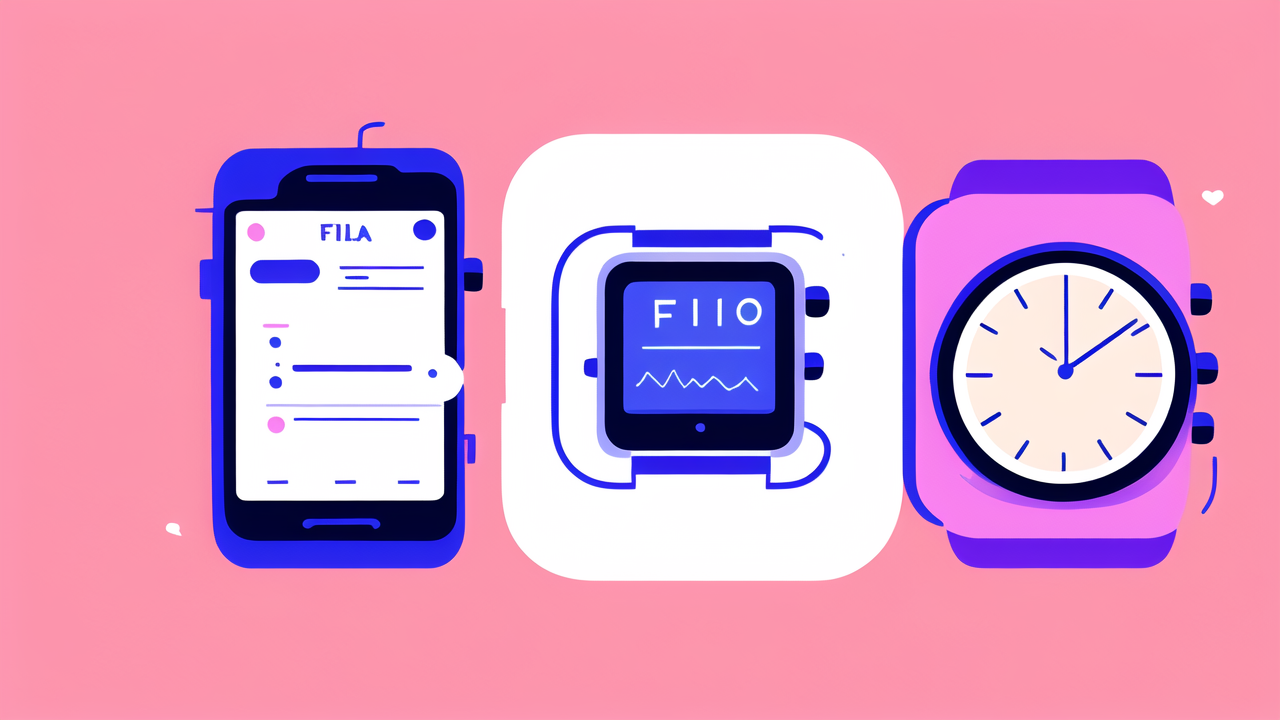Understanding the Evolution of Smart Watches in the United States
The Advent of Smart Watches: A Historical Perspective
Smart watches have come a long way since their inception. The first digital watch, the Pulsar, debuted in 1972. It paved the way for more advanced wearables. In the 1980s, Seiko introduced data-storing watches. These early devices were the ancestors of modern smart watches.

The true smart watch era began in the early 2000s. Companies like Microsoft and Sony experimented with wearable tech. But it wasn't until 2015 that smart watches gained mainstream popularity. This was largely due to the launch of the Apple Watch.
Since then, the market has exploded with options. From fitness trackers to luxury timepieces, smart watches now cater to diverse needs. They've become more than just time-telling devices. They're now essential tools for health, communication, and productivity.
Key Innovations that Define Today's Smartwatches
Modern smart watches are packed with innovative features. These advancements have transformed them into powerful wearable computers. Here are some key innovations:
- Health Monitoring: Many watches now track heart rate, blood oxygen, and even ECG.
- GPS and Navigation: Built-in GPS allows for accurate tracking of runs and outdoor activities.
- Contactless Payments: NFC technology enables easy payments right from your wrist.
- Voice Assistants: Siri, Google Assistant, and others are now accessible on smart watches.
- Cellular Connectivity: Some models can make calls and send texts without a phone nearby.
- Water Resistance: Many smart watches are now swim-proof, expanding their usability.
- Extended Battery Life: Improved power management allows for days of use on a single charge.
These features have made smart watches indispensable for many users. They offer convenience and functionality in a compact, wearable form.
The Influence of Technology on Fashion: The Smart Watch Revolution
Smart watches have bridged the gap between technology and fashion. They're no longer just gadgets, but style statements. This shift has had a profound impact on the fashion industry.
Luxury watchmakers have entered the smart watch market. Brands like Tag Heuer and Montblanc now offer high-end smart watches. These devices combine traditional craftsmanship with cutting-edge tech.
Fashion designers are also collaborating with tech companies. They create stylish bands and watch faces. This has made smart watches more appealing to fashion-conscious consumers.
The customization options are endless. Users can change watch faces to match their outfits. Interchangeable bands allow for further personalization. Smart watches have become an extension of one's personal style.
This fusion of tech and fashion has expanded the smart watch market. It's no longer just for tech enthusiasts. Now, it appeals to a broader audience, including fashion lovers.
The Intersection of Health and Fitness with Smart Watch Technology
Advanced Health Metrics and the Role of Smart Watches
Smart watches have become powerful tools for health monitoring. They offer a range of advanced metrics that were once only available in medical settings. Here are some key health features:

- Heart Rate Monitoring: Continuous tracking helps detect irregularities.
- Blood Oxygen Measurement: Useful for assessing overall health and fitness levels.
- ECG Functionality: Some watches can take electrocardiograms to detect heart issues.
- Sleep Tracking: Monitors sleep patterns and quality to improve rest.
- Stress Monitoring: Uses heart rate variability to gauge stress levels.
These features have made smart watches valuable for preventive healthcare. They can alert users to potential health issues early on. This has led to increased adoption by health-conscious consumers.
Many doctors now encourage patients to use smart watches. The data collected can provide insights into overall health trends. It helps in making more informed decisions about lifestyle and treatment.
Integrating Fitness and Lifestyle: The Impact on Consumer Choices
Smart watches have revolutionized the fitness industry. They've made tracking workouts and progress easier than ever. This has led to changes in how people approach fitness and wellness.
Key fitness features include:
- Step Counting: Encourages daily movement and activity.
- Workout Tracking: Records various exercises and calculates calories burned.
- GPS Tracking: Maps routes for runs, walks, and bike rides.
- Guided Workouts: Some watches offer on-screen exercise instructions.
- Activity Reminders: Prompts users to move after periods of inactivity.
These features have made fitness more accessible and engaging. They've encouraged many to adopt healthier lifestyles. The gamification of fitness through challenges and awards keeps users motivated.
Consumers now prioritize health features when choosing smart watches. This has pushed manufacturers to innovate further in this area. The result is a constant improvement in health and fitness tracking capabilities.
Privacy and Wellness: Navigating the Challenges in Smart Watch Development
As smart watches collect more health data, privacy concerns have grown. Users worry about the security of their sensitive information. Manufacturers face the challenge of balancing functionality with data protection.
Key privacy issues include:
- Data Storage: Where is health information stored and who has access?
- Data Sharing: How is data shared with third-party apps and services?
- Encryption: Are communications between the watch and other devices secure?
- User Consent: How much control do users have over their data?
Companies are addressing these concerns through various measures. Many now offer end-to-end encryption for health data. They're also providing more transparent privacy policies.
Some watches now allow users to control data sharing. They can choose what information to sync with their smartphones or cloud services. This gives users more control over their personal health information.
Regulatory bodies are also getting involved. They're developing guidelines for the collection and use of health data from wearables. This aims to protect consumers while allowing for innovation in the field.
The Future of Smart Watches in Various Industries
The Growing Importance of Smart Watches in Professional Settings
Smart watches are finding their way into various professional environments. They're no longer just personal devices but valuable tools in many industries. Here's how they're making an impact:

- Healthcare: Doctors use smart watches to monitor patients remotely.
- Hospitality: Staff use them for quick communications and task management.
- Retail: Employees access inventory info and process payments via smart watches.
- Logistics: Drivers get real-time updates and navigation on their wrists.
- Security: Guards receive alerts and communicate discreetly through smart watches.
These devices improve efficiency and communication in the workplace. They allow for hands-free access to important information. This is especially useful in fast-paced or high-stakes environments.
Many companies are developing industry-specific smart watch apps. These cater to the unique needs of different professions. As a result, smart watches are becoming essential tools in many fields.
Enhancing the User Experience: Smart Watches for the Fashion-Conscious
The fashion industry continues to influence smart watch design. Manufacturers are focusing on aesthetics as much as functionality. This trend is attracting more fashion-conscious consumers to smart watches.
Key developments include:
- Customizable Watch Faces: Users can change designs to match their style.
- Premium Materials: High-end watches now use luxury materials like sapphire and titanium.
- Slim Profiles: Watches are becoming thinner and more elegant.
- Fashion Brand Collaborations: Tech companies partner with fashion houses for unique designs.
- Interchangeable Bands: Easy-to-swap bands allow for versatile styling.
These features make smart watches more appealing as fashion accessories. They can now seamlessly transition from workouts to formal events. This versatility is a key selling point for many consumers.
The focus on design has also led to innovations in display technology. Some watches now use always-on displays that mimic traditional watch faces. This preserves the classic look while offering smart functionality.
Anticipating Changes: The Potential of AI and Machine Learning in Smart Watches
Artificial Intelligence (AI) and Machine Learning (ML) are set to revolutionize smart watches. These technologies will make watches smarter and more personalized. Here are some potential applications:
- Predictive Health Insights: AI could analyze health data to predict potential issues.
- Personalized Fitness Plans: ML algorithms could create tailored workout recommendations.
- Enhanced Voice Assistants: AI could make voice interactions more natural and context-aware.
- Adaptive Battery Management: ML could optimize battery use based on individual habits.
- Gesture Recognition: AI could enable more intuitive controls through hand movements.
These advancements will make smart watches more proactive and helpful. They'll be able to anticipate users' needs and provide timely assistance. This could range from health alerts to productivity suggestions.
AI and ML will also improve the accuracy of health and fitness tracking. They can account for individual variations and provide more personalized insights. This could make smart watches even more valuable for health monitoring.
As these technologies evolve, smart watches will become more integrated into our daily lives. They'll serve as personal assistants, health guardians, and lifestyle coaches all in one device.




Leave a comment
This site is protected by hCaptcha and the hCaptcha Privacy Policy and Terms of Service apply.